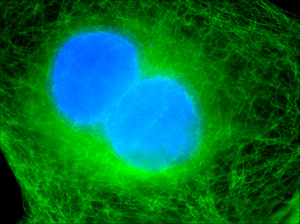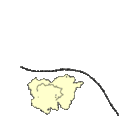Motile facts for kids

Motility is the ability of an organism to move independently, using metabolic energy. This is in contrast to mobility, which describes the ability of an object to be moved. Motility is genetically determined, but may be affected by environmental factors. For instance, muscles give animals motility but the consumption of hydrogen cyanide (the environmental factor in this case) would adversely affect muscle physiology, causing them to stiffen, leading to rigor mortis.
In addition to animal locomotion, most animals are motile (some move by passive locomotion) – the term applies to bacteria and other microorganisms, and to some multicellular organisms, as well as to some mechanisms of fluid flow in multicellular organs and tissue. Motile marine animals are commonly called free-swimming, and motile non-parasitic organisms are called free-living.
Motility also refers to an organism's ability to move food through its digestive tract.
Organisms that cannot move themselves are called sessile.
Images for kids
-
The shoots of plants move by growing towards light. This is known as positive phototropism. The roots grow away from light. This is known as negative phototropism.
-
Monocytes and macrophages of the immune system engulf Bacteria by extending their pseudopodia. Note that this cartoon is not an accurate representation of phagocytosis.
-
Motility at the sub-cellular level. This depicts translation - a motile nanoscale molecular process using protein dynamics.
See also
 In Spanish: Motilidad para niños
In Spanish: Motilidad para niños





